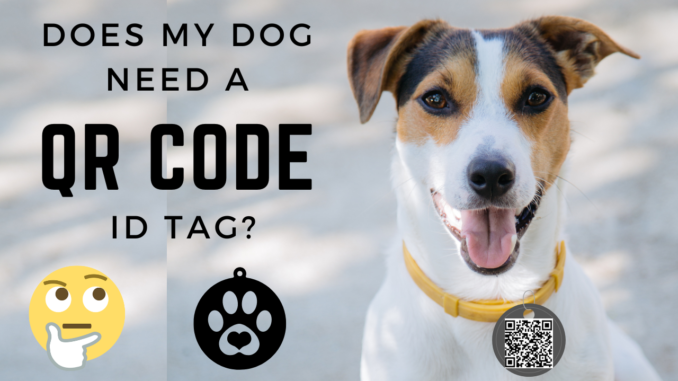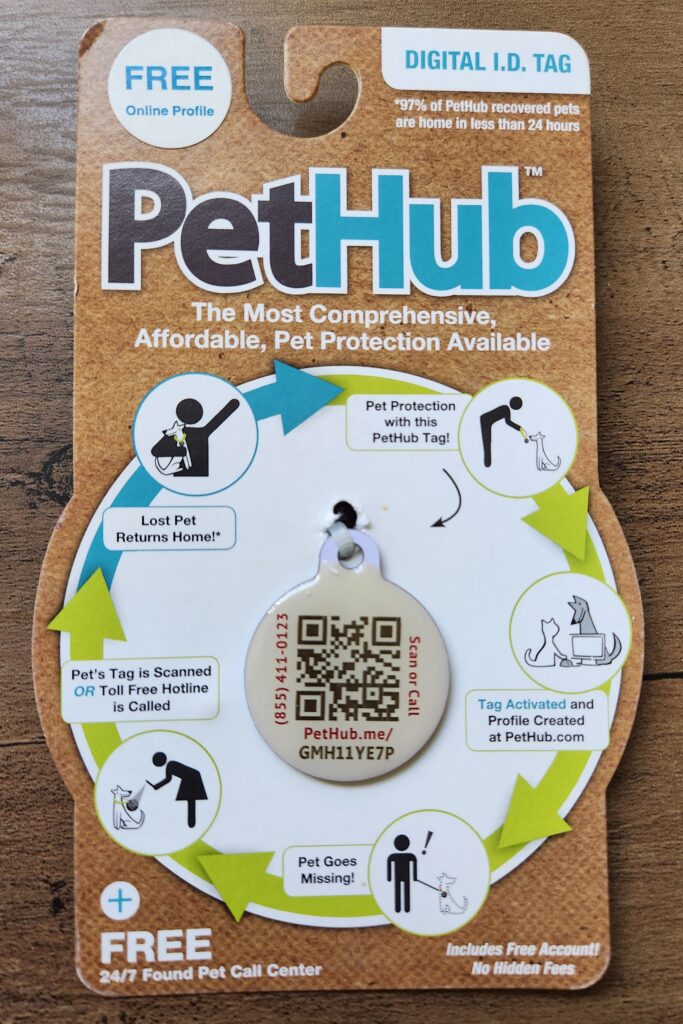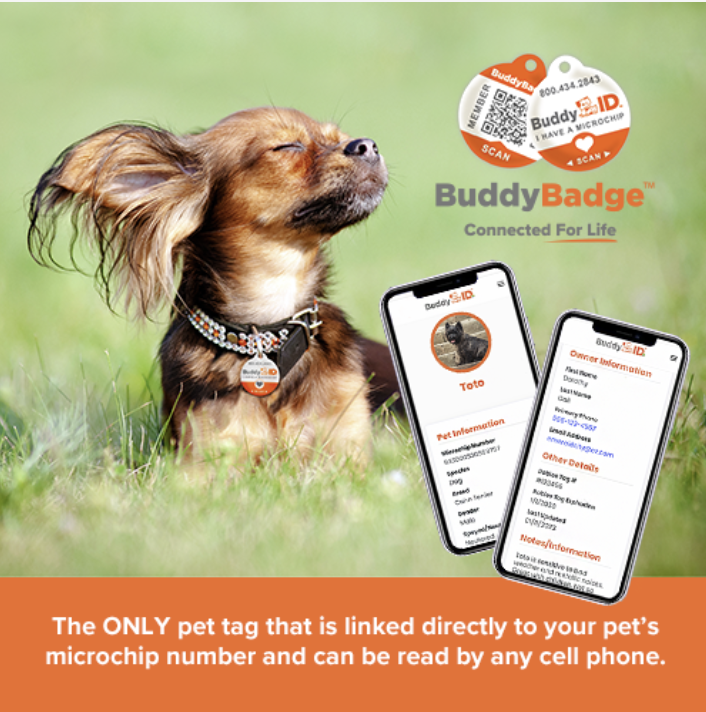
Learn the benefits of QR code dog ID tags including a free owner profile, geolocation, and more.
Identification of one kind or another has been around for as long as dogs have lived alongside humans. Roman mosaic art shows depictions of dogs wearing leather collars. Tapestries show braces of hunting hounds in wide martingale-like collars. These adornments allowed for control of the dogs but also marked them as belonging to a family.

ID tags
Tags as ID came into common use in the U.S. in the late 1800’s as a way of showing that a dog was vaccinated against rabies. Dog taxes and their corresponding tags are recorded as far back as the 1400’s, but when Louis Pasteur’s rabies vaccine came on the market in 1885 such identification became more critical. Being bitten by a stray dog could prove fatal, so knowing that the dog was vaccinated provided some comfort. These tags also provided a way for dogs to be returned to their owners when found wandering on a rancher’s property or picked up by animal control in the city.
It’s unclear when dog owners started utilizing custom-engraved ID tags, but they remain the norm today. Most dogs can be found wearing a collar or harness with an affixed tag that shows their name and the owner’s phone number. It’s a quick ticket home should they become lost – all the finder has to do is call the number on the tag and boom, back home they go. These tags can be ordered online in a dizzying array of shapes, designs, and materials, or created in minutes with in-store engraving machines. If this product is so effective, why do we need anything different?
QR code
The Quick response (QR) code was created in Japan in 1994 by the Denso Corporation. Its purpose was to hold more information and be read faster than the bar code — still used in pet microchip identification — that can only encode a limited row of numbers or letters. The QR was quickly adopted by the automotive industry in Japan, followed by the food production and pharmaceutical industries.

In 2002 QR codes became part of many people’s daily lives thanks to mobile phone technology that could read them. No longer just the property of industries with special scanning equipment, now these codes could be read and used by anyone. Soon the public was using QR codes to visit websites, get product discounts, and redeem electronic tickets. Creative thinkers developed more and more uses for the QR code to improve people’s daily lives.
The first QR code ID tag
Pethub was founded in 2010 by Tom Arnold. An entrepreneur and expert in technology, Arnold was looking for a way to keep pets safe and out of shelters. Many lost dogs and cats are never found or claimed by their families. No ID tags, outdated ID tags, unregistered or outdated microchips, and many other factors contribute to this problem. Without valid ID, finders cannot contact owners, so lost pets are absorbed into stray populations, kept by finders, or taken to shelters. Applying his understanding of software to the pet identification problem led Arnold to create the first QR code dog tag.
Now called the “Get Me Home Club” tag, Pethub’s flagship product is a round tag printed with a QR code. When scanned by a user’s phone, it connects to the pet’s profile on the Pethub website. The free basic profile includes the owner’s contact info, other emergency contacts like friends, family, and pet sitters, and notes for important medical and behavioral info. The finder can simply call the owner using the info in the profile, or they can call Pethub’s 24/7 call center for more options. Pethub works with animal welfare partners that incorporate the tags into their adoption, reclaim, and dog licensing programs.

Here a QR code, there a QR code
Since Pethub’s innovation in 2010, there are now hundreds of different QR code pet ID tags available. What’s the difference? A quick read through the descriptions of the most popular tags show that they are all very similar. Most cost around $15 and include a free online profile complete with phone numbers, medical information, and photos.
Most include geolocation when a finder scans the tag, so the owner will receive an email with a Google map showing their dog’s location. Note that these kinds of tags do not have GPS in them. The GPS signal comes from the finder’s mobile phone. Some offer a live call center which is a valuable tool, while others only offer an online profile. Like standard engraved tags, they come in a variety of colors, shapes, and materials to suit the owner’s preference. Reviews for the various brands describe them as generally satisfactory in quality and easy to use.
Comprehensive lost pet services
Some companies like Buddy ID microchip registry offer a package deal of protection for dogs including a QR code tag. Their BuddyBadge™ integrates with the pet owner’s microchip registration for more comprehensive coverage. This belt-and-suspenders approach gives a lost dog multiple ways to be found. Anyone with a mobile phone can scan the tag and contact the owner. If the tag or collar are lost, the dog can be scanned for a microchip at a vet or shelter and owner information obtained from the registry.

QR code tags are a valuable tool for any dog owner. While engraved tags are handy and low-tech, they can wear out or become outdated. The information in a QR code tag account can be updated at any time. This is helpful if the owner moves, changes their phone number, or changes alternate contacts. These tags have the added benefit of geolocation from the finder’s phone. A QR code tag combined with a registered microchip will go a long way in bringing a lost dog back home quickly.

